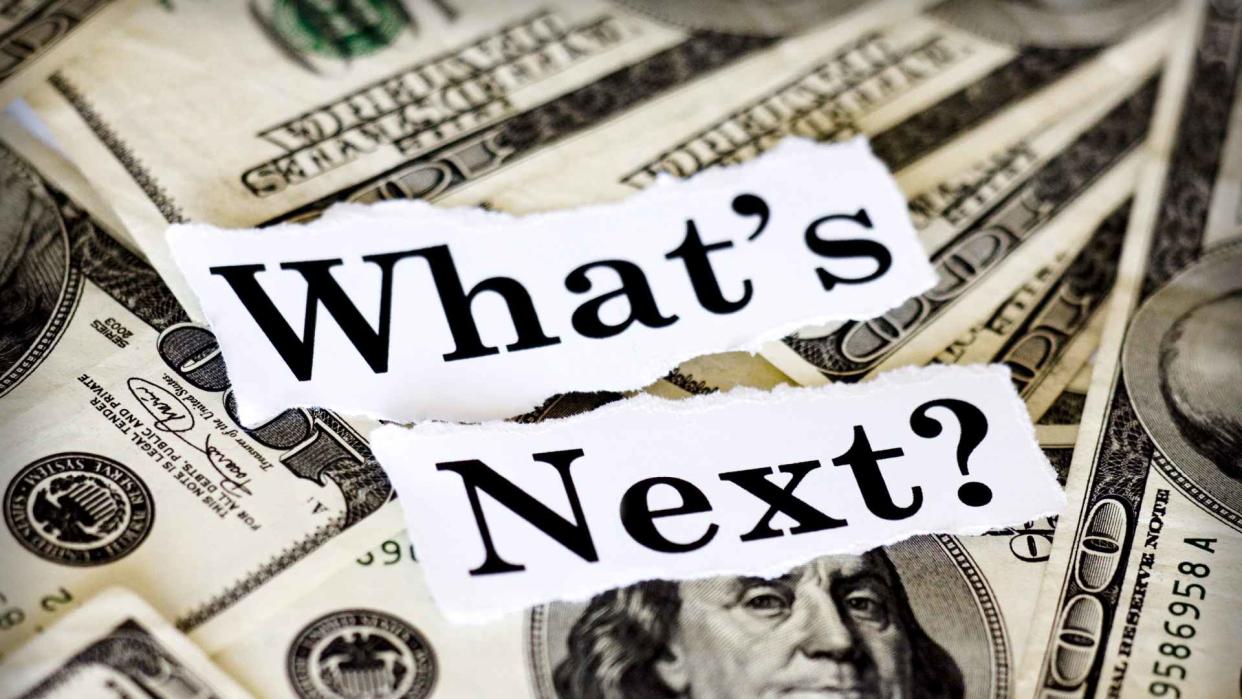6 Ways Fed Rate Cuts Will Impact Your Finances in 2024

At its last meeting of the year, the Federal Reserve paused its interest rate hikes for the third time in 2023 (following 11 increases since March 22), saying that “inflation has eased over the past year but remains elevated.”
See: 7 Things the Middle Class Spends Money on That Hurts Their Chances of Being Rich
Find: 3 Ways To Recession-Proof Your Retirement
The Fed said it would maintain its funds rate at a range of 5.25% to 5.5%, a 22-year high, after its most recent two-day Federal Open Market Committee (FOMC) meeting on Dec. 12 and Dec. 13. It also signaled several rate cuts in 2024.
This could be positive news for consumers, as the impact of rate cuts might be felt across a range of industries. Indeed, for Americans, rate cuts means lower interest rates and in turn, lower borrowing costs. Everything from credit cards, loans and mortgages will start to become less expensive.
“Our expectation is that the Fed will cut rates three-four times in 2024, and that will lead to some changes for consumers and investors,” said Jeff Raupp, CFA and co-CIO, Ategenos Capital.
Also: Warren Buffett Reveals How To Invest $10,000 If You Want To Get Rich
Mortgages
Mortgage rates have been soaring in 2023. After having hovered around 8%, the 30-year average rate finally fell below 7% on Dec. 13 — the first time since August. The 30-year average mortgage rate now stands at 6.95%, according to Freddie Mac.
Now, Michele Raneri, vice president of U.S. research and consulting at TransUnion, said that over the course of 2024, expected cuts in the federal funds rate will result in a corresponding decline in mortgage interest rates.
In turn, Raneri said she anticipates this will motivate some consumers who have been holding off to consider buying a home.
“Lower rates should also motivate existing homeowners, particularly those who have recently purchased a home at a high interest rate, to refinance at a lower interest rate,” she said. “This could mean significant savings for these homeowners, allowing these families more money each month to allocate and spend elsewhere.”
Ted Rossman, senior industry analyst for CreditCards.com, further argued that if rates continue to fall in 2024 — and especially if they were to dip below 6% — it could significantly improve affordability and also ease the inventory crunch. In that eventuality, more people would be incentivized to put their homes on the market.
“On a $300,000 loan, there’s a $400 savings in the monthly payments at 6% versus 8%,” added Rossman.
Credit Cards
Lower rates will also boost consumer finances in other areas, such as credit card debt and car loans.
“We have started to see delinquencies and defaults rise in those areas and lower interest rates will give them a little breathing room,” said Raupp.
However, Rossman argued that the rate cuts might not trigger a very noticeable difference, as “20% interest rates aren’t much better than 21%.”
Same goes for auto loans, he added: “On a $35,000 loan, every quarter-point only changes the monthly payment by $3 or $4.”
Cash Positions
With rate cuts coming, Raupp recommended that investors reconsider their cash positions.
“Nearly $6 trillion sits in money markets today, fueled by yields exceeding 5%,” he said. “While we don’t expect money market yields to go back to the sub-1% levels of a few years ago, we do think they’ll be somewhere in the 3-4% range. At the margin, this makes stocks and bonds more attractive relative to cash.”
Investments
As for investments, Rossman deemed them “a wild card.”
“The market seems to be getting ahead of the Fed, pricing in six quarter-point rate cuts rather than the FOMC’s median estimate of three in 2024,” he said. “So there could be a market backlash if the cuts aren’t as aggressive as the market hopes.”
He noted, however, that on the bright side, hopes for a soft landing have risen substantially. Any rate cuts should be a tailwind for stocks.
Bonds
Some forecasts suggest the Fed could cut interest rates from the current range of between 5.25% and 5.50% to as low as 4.6% by the end of 2024. In turn, when rates move lower, stocks and bond mutual funds may offer attractive opportunities for investors, according to Ryan Viktorin, CFP and financial consultant for Fidelity Investments.
“Once the Fed begins cutting rates, we expect prices of high-quality corporate bonds to recover strongly,” she said, adding that rate cuts could benefit stocks in the short-term.
“Since the Fed’s current monetary policy tightening cycle began in May 2022, stocks have followed their historic pattern in rising-rate environments: struggling at first and then recovering much as they had during previous rate-hiking cycles,”
High Yield Savings Accounts (HYSAs)
As the Fed rates go down, so may your interest on your savings.
“Right now, HYSAs are very attractive, but as rates go down, it may be better to invest in the stock market, or lock in rates with CDs,” said Jay Zigmont, PhD, CFP and founder of Childfree Wealth.
More From GOBankingRates
Grant Cardone Says Passive Income Is the Key To Building Wealth: Here's His No. 1 Way To Get It
10 Ways to Turn Your Six-Figure Salary Into Generational Wealth
This article originally appeared on GOBankingRates.com: 6 Ways Fed Rate Cuts Will Impact Your Finances in 2024
